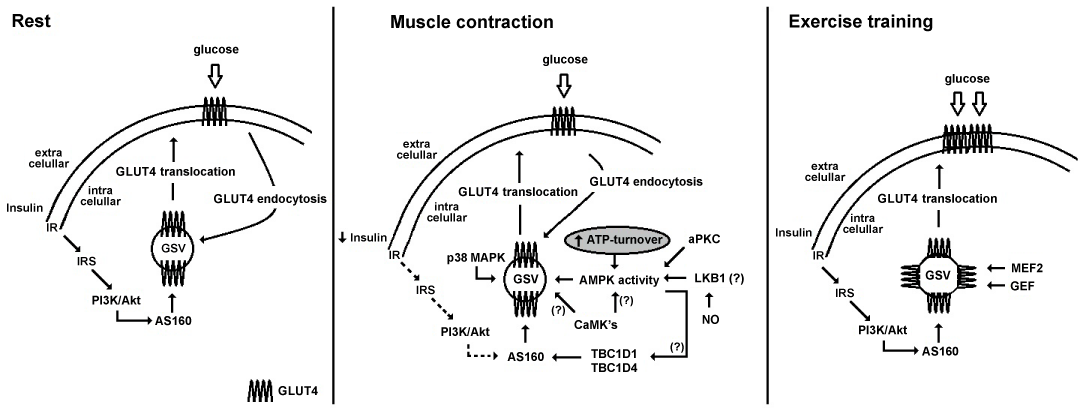
 |
| Figure 1: Putative metabolic pathways leading to changes in GLUT4 expression in the skeletal muscle following acute exercise and exercise training. Most GLUT4 is stored in intracellular vesicles (GSV = GLUT4 storage vesicles) in the muscle at rest and their translocation to the plasma membrane occurs mainly by insulin action; after glucose transport, GLUT4 is endocytosed from the cell surface. Muscle contraction leads to an increase in glucose uptake by the working muscle evidenced by gain of GLUT4 at cell surface, which does not involve any signals proximal to the insulin receptor substrate (IRS), phosphatidyl inositol 3-kinase (PI3K) or Akt. Instead, this gain occurs by increased AMPK activity that stems from increased ATP-turnover. CaMK protein is also involved in GLUT4 trafficking, although it is unclear whether CaMK is AMPK-dependent or not. Together, these mechanisms increase cellular glucose uptake even in the presence of very low circulating levels of insulin. When the acute effects of exercise on glucose transport have disappeared there are changes in insulin sensitivity that appear to be dependent on TBC1D1, TBC1D4/AS160 and p38 MAPK, which remain phosphorylated for hours after exercise, probably activated by residual AMPK of muscle contraction. As for chronic effects of exercise, evidence suggests there are adaptations in the pre-translational and post-translational levels, in particular MEF2 and GEF, which was shown to increase intracellular GLUT4 and improve insulin sensitivity. |